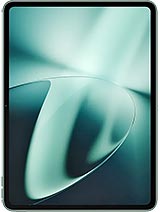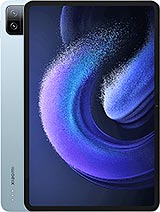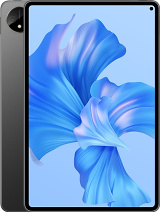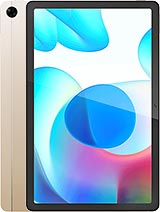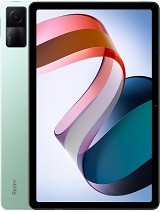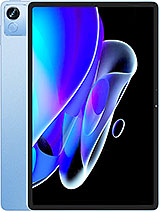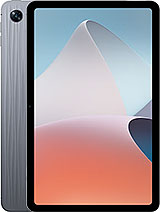Xiaomi Pad 6 review

Display
The Xiaomi Pad 6 has a gorgeous 11-inch IPS LCD screen of 2,880 x 1,800 pixels or 309ppi. The display supports 10-bit color depth or 1B colors, dynamic 144Hz refresh rate, and Dolby Vision and HDR10 streaming.
The screen covers the DCI-P3 color gamut, has no notches, and is protected with a Gorilla Glass 3 sheet. It is also assisted by a color temperature sensor so it can color correct the display based on your ambient light.

Xiaomi has listed 550nits of typical brightness and up to 1400:1 contrast.
We've completed our display measurements and couldn't match Xiaomi's numbers. We captured 426 nits of typical brightness and 500nits of high maximum brightness. The contrast was 1060:1. Those are still solid numbers for a tablet.
The minimum brightness at point white was 1.4 nits.
Color accuracy
The Xiaomi Pad 6 display supports DCI-P3 and sRGB color spaces. The display color options offer three different color models - Original PRO (default, sRGB), Vivid (DCI-P3), and Saturated (DCI-P3 with saturation boost). You can fine-tune the color temperature for each mode. Adaptive colors is also an option - this changes the color temperature depending on the ambient light.
There is also a custom section, where you can select the color gamut (Original, P3, sRGB) and fine-tune colors, saturation, hue, contrast, and gamma.
The Original Pro (default) option reproduces sRGB faithfully, and we found it to be fairly accurate, except for the slightly bluish-white and gray hues. Same goes for Vivid towards DCI-P3 targets.
We also tested the modes on the Advanced Settings - P3 and sRGB offer good accuracy, but they both exhibit the blue tint over the white and gray colors. The Original color from Advanced Settings has a slightly better accuracy towards sRGB targets than the Original Color from the Standard display settings.
Refresh rate
The display supports up to 144Hz refresh rate, and there are two refresh modes - Custom (choose between 144Hz, 90Hz or 60Hz refresh ceilings), and Default (automatic switching behavior).
Xiaomi has specified that the screen supports 7 refresh rates - 30Hz, 48Hz and 60Hz are used in streaming, 50Hz for idle picture, and 90Hz, 120Hz, and 144Hz are used for the system interface, games and benchmarks, customized apps.
The adaptive refresh rate works as advertised - it drops down to 50Hz when the screen shows static.
We saw all three (30/48/60) refresh rates in video playback and streaming depending on the FPS - 30Hz was used for 30fps videos, 48Hz was used for 24fps footage, and 60Hz was used for 60fps streams.
We can confirm the screen uses 90Hz, 120Hz and 144Hz, depending on the refresh rate ceiling, in the UI, games, benchmarks and compatible HFR apps.
The Automatic refresh rate option usually sticks to the 144Hz ceiling for the UI, but limits most apps except web browsers, games, and benchmarks, to a 60Hz ceiling.
Display enhancements
The Xiaomi Pad 6 offers two AI Image Engine features (both disabled by default). The first is AI HDR enhancement - it uses some sort of processing across SDR content to bring more detail to both lighter and darker areas.
The second one is MEMC - motion interpolation from low frame rate footage to high frame rate. The latter leads to a soap opera-like effect for some movies/TV shows, so if you feel something is wrong, say too fast or too real, just don't use MEMC.
HDR and streaming
The Xiaomi Pad 6 comes with Widevine L1 DRM support, and Full HD streaming with HDR10 and Dolby Vision support is available across popular platforms, Netflix included.
Battery life
The Xiaomi Pad 6 is powered by an 8,840mAh battery. According to Xiaomi, it should be enough for 65 hours of music playback, or 16 hours of video playback, or 23 hours of book reading, or 27 days on standby.
The Pad 6 scored 11:31h of web browsing on our battery test and 12:34h on looped video playback. These scores are not bad at all, considering many tablets can offer sub-10h endurances.

We don't calculate tablet endurance ratings as our formula for phones takes standby battery draw into account. Applying the same formula for tablets with their larger batteries doesn't make sense because their standby power draw is minimal, so we focus on the active screen-on tests instead.
The web browsing test was carried out at 144Hz refresh rate mode, whereas the video playback test was done at 60Hz.
Charging speed
The Xiaomi Pad 6 supports 33W fast charging, and the tablet ships with such power adapter (with USB-A output).

In our testing, the Xiaomi Pad 6 charged to 20% in 15 minutes, 38% in 30 minutes, while a full charge took 90 minutes. Interestingly, Xiaomi advertises 99% in 99 minutes, but we got a slightly better charging time.
Speakers
The Xiaomi Pad 6 has four speakers placed symmetrically on its shorter sides, 2x2. They are equally loud and powerful and support Dolby Atmos.

The Pad 6 scored a Very Good mark on our loudness test, and we can confirm the sound is notably loud. Even better, the audio quality was very good, too, with excellent thump and vocals, and good even though not great high frequencies.
We carried the test with Dolby Atmos (on by default). We tried it again with Dolby Atmos disabled, and we found the speakers lacking in bass, worsened vocals and the same highs. That is why we recommend keeping this enhancement on.
Use the Playback controls to listen to the phone sample recordings (best use headphones). We measure the average loudness of the speakers in LUFS. A lower absolute value means a louder sound. A look at the frequency response chart will tell you how far off the ideal "0db" flat line is the reproduction of the bass, treble, and mid frequencies. You can add more phones to compare how they differ. The scores and ratings are not comparable with our older loudspeaker test. Learn more about how we test here.
Reader comments
- Anonymous
- 04 Mar 2025
- nGZ
I agree, mine was rubbish from the start, it won't upgrade further than Android 13 and it's buggy, laggy and rubbish. I regretted buying it from day one and if I could have sent it back I would have. I ended up buying the OnePlus Pad and it...
- Kikoman
- 05 Dec 2024
- nyc
Thank you bro I keep searching how to remove that
- Anonymous
- 28 Nov 2024
- 7Xe
I've no idea why your unit is having such a problem. Are you sure you got an original one? Literally only you out of thousands upon thousands of Xiaomi users are having that problem.

